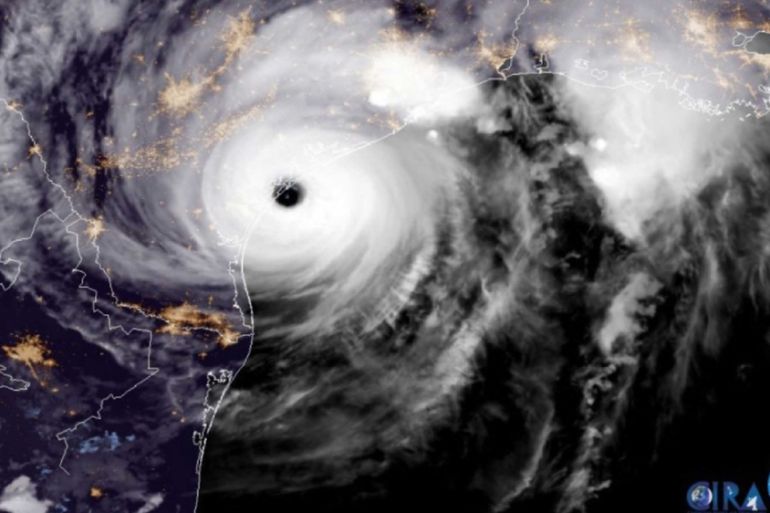Climate change produces wetter and slower tropical cyclones
Hurricanes are moving slower than thus last longer in one place. Harvey’s flooding of Texas may be a direct result.

As the Earth’s climate warms, the atmospheric circulation changes. In fact, the regular eastward movement of low-pressure systems around the northern hemisphere, as seen in most of the 20th century is now often absent.
The consequence of an often stationary, or at least slow-moving global weather pattern, which has already been seen in tropical cyclones.
Keep reading
list of 4 itemsCanada wildfires spur evacuation orders, warnings: What you need to know
Evacuation orders issued as wildfire grows near Canada’s Alberta oil patch
Energy summit seeks to curb cooking habits that kill millions every year
A study by Jim Kossin, NOAA scientist based in the University of Wisconsin, has shown a general slow-down in the forward motion of hurricanes.
The measurements show that the forward speed of tropical cyclones has decreased globally by about 10 percent since 1949.
More importantly, the slow-down at landfall has been 20 percent for Atlantic hurricanes and 30 percent for Asian typhoons.
Hurricanes and typhoons, and lesser tropical cyclones, generally are carried along with the prevailing breeze; if that wind slows, so do they. To make the double-whammy, a warmer atmosphere carries more water vapour that falls out as more rain, now out of slower-moving cyclones.
Another study, led by Ethan Gutmann of the NCAR and published in Journal of Climate, re-ran the lifespan of 22 Atlantic hurricanes that happened between 2001 and 2013. The point was to see whether a future climate would re-create these hurricanes with more devastating results.
Among the group were the well-studied hurricanes Wilma, Rita, Sandy, Isaac, Ike, Ivan, Isabel and Gustav.
The computer model was run for each storm using the current climate, then for a climate approximately 4.5 degrees Celsius hotter – the amount of warming expected by the end of the century if no attempt is made to control greenhouse gas emissions.
As a group, the 22 hurricanes in the future simulation had six percent stronger winds, moved at a nine percent slower speed, and had a 24 percent higher rainfall rate. The results are logically consistent and an extension of what is already happening.
Coastal cities affected by tropical cyclones can expect an increasingly difficult and expensive future. They have flood defences designed and built for the apparent steady-state conditions of the 20th century.
This century offers higher sea levels, heavier rain, and more rain, from slower-moving hurricanes.